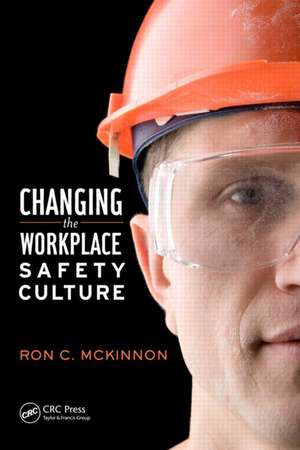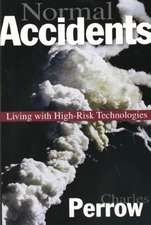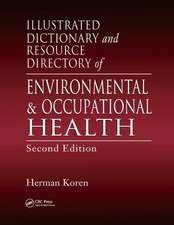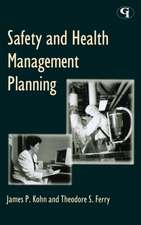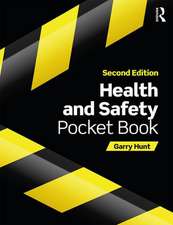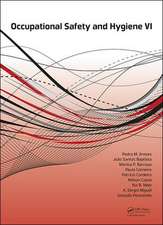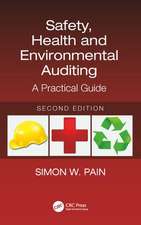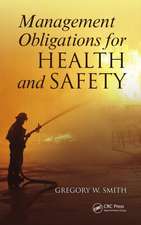Changing the Workplace Safety Culture: Workplace Safety, Risk Management, and Industrial Hygiene
Autor Ron C. McKinnonen Limba Engleză Hardback – 15 iul 2013
Rather than focus on behavior-based safety measures, this book provides step-by-step procedures on how to establish a long-lasting integrated safety management system in any organization. It explores how to change the safety personality of an organization. The author covers the management principles and functions that need to be applied to bring about safety culture change and includes many real-life examples. He goes on to explain the activities needed to implement safety change and the benefits of getting others involved in the safety management system.
The only way to ensure that accidents and their consequences are tackled at the source is to identify and eliminate the workplace risks before, rather than after, the event. To be truly effective, safety activities must be integrated into the day-to-day business and become a way of life for management and employees of the organization. This book provides a blueprint for creating an active safety culture that prevents accidents before they occur and becomes the key component in ongoing safety success.
Preț: 763.94 lei
Preț vechi: 839.50 lei
-9% Nou
146.23€ • 158.89$ • 122.91£
Carte disponibilă
Livrare economică 31 martie-14 aprilie
Livrare express 14-20 martie pentru 32.23 lei
Specificații
ISBN-10: 1466567686
Pagini: 252
Ilustrații: 14 black & white illustrations
Dimensiuni: 156 x 234 x 20 mm
Greutate: 0.5 kg
Ediția:New.
Editura: CRC Press
Colecția CRC Press
Seria Workplace Safety, Risk Management, and Industrial Hygiene
Public țintă
Academic and Professional Practice & DevelopmentCuprins
Recenzii
—Jonathan Klane M.S.ed., CIH, CHMM, CET, 2012, Klane’s Education Information Training Hub
"Ron McKinnon informs the reader of how management's role really sets what safety culture is all about. He guides the reader through a detailed discussion of why safety culture isn't just limited to a collection of random worker behaviors but is much more of a purposeful outcome of the active policies that management embraces, demonstrates, and leads with by example." -Jonathan Klane M.S.ed., CIH, CHMM, CET, 2012, Klane's Education Information Training Hub
Descriere
Despite the fact that workplaces have implemented and followed new safety innovations and approaches, the majority of them have seen little, if any, significant progress in the reduction of accidental deaths and injuries. Changing the Workplace Safety Culture demonstrates that changing the way an organization views and practices safety will impact the behavior of all employees including executive and line managers. It delineates how safety culture change can be implemented and defines the roles of everyone in the safety culture, including management, employees, and unions and their members.
Rather than focus on behavior-based safety measures, this book provides step-by-step procedures on how to establish a long-lasting integrated safety management system in any organization. It explores how to change the safety personality of an organization. The author covers the management principles and functions that need to be applied to bring about safety culture change and includes many real-life examples. He goes on to explain the activities needed to implement safety change and the benefits of getting others involved in the safety management system.
The only way to ensure that accidents and their consequences are tackled at the source is to identify and eliminate the workplace risks before, rather than after, the event. To be truly effective, safety activities must be integrated into the day-to-day business and become a way of life for management and employees of the organization. This book provides a blueprint for creating an active safety culture that prevents accidents before they occur and becomes the key component in ongoing safety success.
